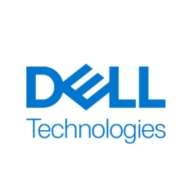

Dell PowerFlex and Azure Stack HCI are competing in the hyper-converged infrastructure space. Dell PowerFlex is generally preferred for its pricing and support, while Azure Stack HCI is favored for its features and performance.
Features: Dell PowerFlex offers scalability, robust storage capabilities, and integration flexibility, making it ideal for heavy data environments. Azure Stack HCI offers seamless integration with Microsoft Azure services, superior hybrid cloud deployment capabilities, and cloud-native functionality appealing to enterprises.
Room for Improvement: Dell PowerFlex could enhance its cloud integration and expand hybrid deployment capabilities. The user interface could be made more intuitive, and better analytics tools could be integrated. Azure Stack HCI could simplify its deployment process and enhance support for non-Microsoft environments. Pricing transparency and licensing structure could be improved.
Ease of Deployment and Customer Service: Dell PowerFlex provides a streamlined deployment process and comprehensive support, ensuring efficient setup and maintenance. Azure Stack HCI involves a more complex deployment, particularly in hybrid settings, but benefits from a vast customer service network from Microsoft, supporting users extensively.
Pricing and ROI: Dell PowerFlex is competitively priced with lower initial costs, leading to quicker ROI, attractive for cost-sensitive enterprises. Azure Stack HCI has higher entry costs but promises long-term savings and value through advanced cloud integration and scalability features.
There has been some return on investment in terms of just time usability and reduction of footprint.
Not every support team member is very knowledgeable about Azure Stack HCI, creating delays in resolution.
The level of support needs improvement as the front-line support staff lack knowledge when we raise cases.
We do not have local Dell technical support.
The scalability is very good and is one of the key features of Dell PowerFlex.
It does not feel like a well-oiled machine yet, with too many idiosyncrasies and insufficient documentation and integration, feeling more like software that is still in beta.
There are discrepancies between managing VMs through Azure Arc versus managing them directly, as changes made not using the Azure Arc integration are not easily reflected in Azure Arc.
Hyper V seems to lag behind compared to VMware.
They could have more AI functionality in the future.
The level of support needs improvement as the front-line support staff lack knowledge when we raise cases.
As more customers start deployment, I believe use cases will develop, leading companies to consider that.
The licensing is quite expensive because it's per call.
The integration with Azure using Azure Arc is excellent.
Dell PowerFlex includes PowerFlex Manager, which integrates with this solution to provide complete orchestration; you can manage your entire hardware as well as software segment and application segment through a single pane of glass, making it very easy to use and manage.
The scalability is very good and is one of the key features of Dell PowerFlex.
| Product | Market Share (%) |
|---|---|
| Dell PowerFlex | 8.8% |
| Azure Stack HCI | 3.6% |
| Other | 87.6% |


| Company Size | Count |
|---|---|
| Small Business | 4 |
| Midsize Enterprise | 1 |
| Large Enterprise | 3 |
| Company Size | Count |
|---|---|
| Small Business | 8 |
| Midsize Enterprise | 8 |
| Large Enterprise | 15 |
Azure Stack HCI efficiently integrates software-defined networking and Azure Kubernetes Service, offering a streamlined hybrid setup for VM management while maintaining top performance.
Azure Stack HCI enhances data center operations with high-end processors and storage, optimal Kubernetes support, and integration with Azure Arc and Azure Site Recovery. High application density in four-node configurations improves both time and infrastructure efficiency. Despite its strengths, the platform can improve in areas like software-defined networking, operational management, and simplifying deployments, which currently rely on PowerShell. Users often desire better training and integration with Microsoft Azure Portal, along with multi-cluster capabilities and storage architecture enhancements. Improvements in Hyper V virtualization are also needed to match competitors like VMware.
What are the key features of Azure Stack HCI?In sectors like government, Azure Stack HCI is crucial for running secure on-premise services with selectable Azure features to ensure data privacy. Businesses leverage the platform for VM creation, management, and monitoring through Windows Center, alongside Kubernetes production environments. Connectivity with Azure allows for smoother cloud transitions, appreciated for its dashboard manageability and substantial network capacity.
Dell PowerFlex is a software-defined storage infrastructure delivering modern architecture and versatile deployment for on-premises or cloud. It achieves high performance, scalable storage, and workload consolidation through advanced automation.
PowerFlex's VMware compatibility ensures seamless integration, offering flexibility in compute and storage scaling. With its hyper-converged infrastructure, it caters to AI, cloud, and database environments, providing robust automation, resilience, and security. Flexible deployment options are complemented by a single-window management system, prioritizing cost optimization. However, enhancements are needed in monitoring tools, user interface, and AI functionality. Migration from Hyper-V and licensing flexibility also require attention, while improved documentation could simplify usage. Integration with services and streamlined upgrade processes are essential.
What are the key features of Dell PowerFlex?PowerFlex is essential in industries requiring support for mission-critical workloads and large-scale applications. It is instrumental for deploying storage, compute nodes, hyper-converged infrastructure, and private clouds. The platform integrates compute, storage, and networking, optimizing performance for modern applications like AI video analytics and disaster recovery.
We monitor all HCI reviews to prevent fraudulent reviews and keep review quality high. We do not post reviews by company employees or direct competitors. We validate each review for authenticity via cross-reference with LinkedIn, and personal follow-up with the reviewer when necessary.